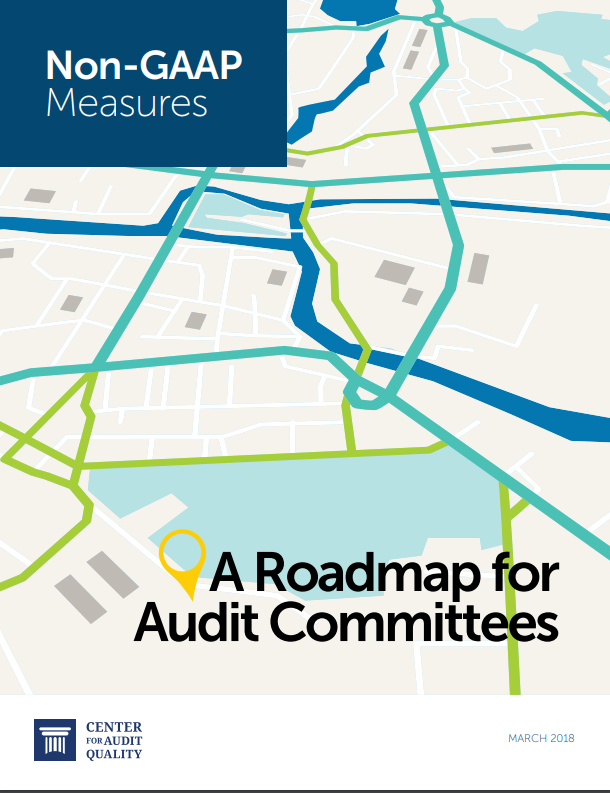While Generally Accepted Accounting Principles (GAAP) provide a framework for consistency and comparability across U.S. financial statements, non-GAAP financial measures can be a valuable tool for companies who are trying to paint a broader financial picture for their investors. Often requested by investment analysts, non-GAAP measures have become an integral part of the U.S. financial reporting system, although not without debate and controversy.
The inherent challenge surrounding non-GAAP measures is the lack of consistency—both in calculation and reporting—from one company to the next. This can become incidentally deceptive if the end-user doesn’t know whether the performance being reported by the press is GAAP or non-GAAP. In turn, the SEC has devoted significant attention to non-GAAP measures in recent years and has issued guidance specific to the presentation of these metrics. Although companies are improving their non-GAAP reporting, the SEC reminds audit committees that there are strides still to be made.
The Challenge for Audit Committees
In 2017, the Center for Audit Quality (CAQ) hosted three roundtable discussions to understand the specific challenges that non-GAAP measures present for audit committees, among other stakeholders in the reporting process. Despite the difficulties that non-GAAP measures create, the 50+ roundtable participants unanimously agreed that the benefits of non-GAAP metrics far exceeded the challenges; they also emphasized the critical role of the audit committee in assessing these metrics for fairness and consistency, particularly when non-GAAP measures serve as an input for executive compensation.
The audit committee’s [role in] asking questions about the preparation of non-GAAP measures is an important area. It begins with, ‘How are we using [non-GAAP measures] to better explain to our shareholders, first and foremost, how management thinks about the business?’…Particularly with complex, multi-segment businesses and global businesses, there are going to be times and instances where [non-GAAP measures] do enhance a user’s understanding.
Jim Hunt, Audit Committee Chair, Brown & Brown
 As an output from the roundtable discussions, the CAQ has created a tool to guide audit committees in their oversight and assessment of non-GAAP measures. Titled Non-GAAP Measures: A Roadmap for Audit Committees, the guide summarizes insights across the various CAQ roundtables and provides boards and audit committee members with a actionable framework for addressing the following questions:
As an output from the roundtable discussions, the CAQ has created a tool to guide audit committees in their oversight and assessment of non-GAAP measures. Titled Non-GAAP Measures: A Roadmap for Audit Committees, the guide summarizes insights across the various CAQ roundtables and provides boards and audit committee members with a actionable framework for addressing the following questions:
- What are the key perspectives or steps to consider when assessing management’s use of non-GAAP measures?
- What’s the role of the external auditor? How can they be used as a resource?
- What are the current leading practices for non-GAAP measures across industries?
Whether a board member is familiar or unfamiliar with non-GAAP measures, this tool serves as an excellent guide to understanding both the challenges and solutions facing audit committees today. Click here to download the Roadmap for Audit Committees, and don’t miss video summary below.





